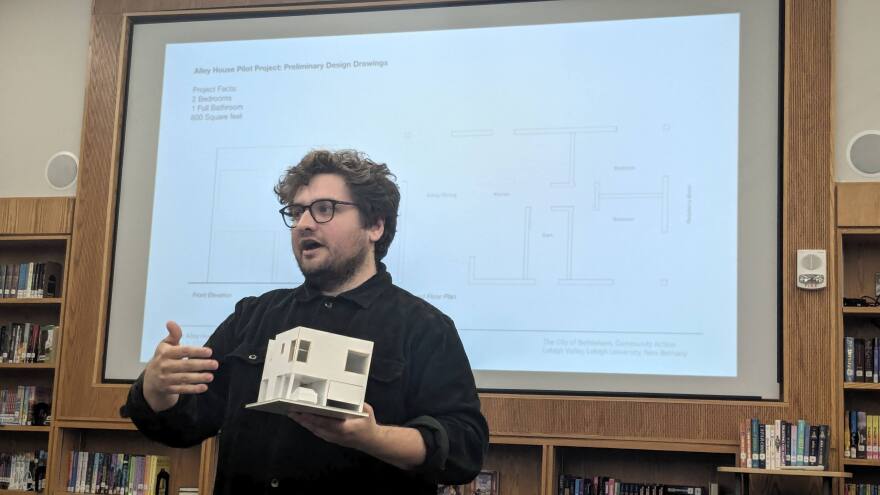BETHLEHEM, Pa. — Details about Bethlehem's first proposed alley house in years, a joint project with local nonprofits that could lead the way for dozens more in years to come, were shared at a community meeting Thursday.
Ahead of a push to build more accessory dwelling units — compact, self-contained secondary housing on the same lot as an existing home — city officials, two Bethlehem nonprofits and Lehigh University are working together on a sort of trial run.
Though alley houses and similar homes built decades ago still are common in Bethlehem, city zoning rules don't currently allow building ADUs without a specially granted variance.
Amid a severe housing crunch, though, planners and activists alike see ADUs as a way to boost supply in neighborhoods without much room left to build.
“One of our guiding questions here is really determining, you know, would it be a problem to bring these [ADUs] back to Bethlehem, We don’t know 100% – that’s why we’re doing a pilot.”Anna Smith
If they're allowed, a recent study projects residents will build 15 to 30 throughout the city over five years.
The first step toward changing the zoning to allow alley houses, Bethlehem Deputy Director of Community and Economic Development Sara Satullo said, is to try building one.
'That's why we're doing a pilot'
To that end, Bethlehem, Community Action Lehigh Valley, New Bethany and Lehigh University intend to build a two-bedroom, 740-square-foot alley house behind 1604 W. Broad St.
“One of our guiding questions here is really determining, you know, would it be a problem to bring these [ADUs] back to Bethlehem,” said Anna Smith, director of Community Action Development Bethlehem, which is part of Community Action Lehigh Valley.
“We don’t know 100 percent — that’s why we’re doing a pilot.”
“The idea of the pilot project is, of course, to pilot it, test it out — to evaluate it both during the process and especially afterward,” Wes Hiatt, an architect and Lehigh University professor working on the pilot project, said.
“Like what is the effect of this one unit? So we can say, ‘Hey, that's great. Let's do some more.’ Or actually maybe that didn't work, or maybe we should tweak some things.”
Community Action will oversee construction and New Bethany will manage the finished property. Lehigh University will assist with design, construction and analysis portions of the project while the city leads the zoning change effort.
New rules could take years
Along with providing a way to evaluate how a new alley house will fit into West Bethlehem, the new building is a testbed for developing a set of best practices and assessing a slate of technologies and techniques, such as a planned green roof that should help reduce runoff.
If the trial run goes well, a zoning study would examine the project for lessons learned and evaluate what rules governing ADUs should look like.
The entire process to enact new rules could take years.
“The goal would be not going back for future variances, and that was kind of the clear guidance back from the Zoning Hearing Board."Bethlehem Deputy Director of Community and Economic Development Sara Satullo
City officials eventually hope to approve a standard set of alley house designs that residents can construct with minimal permitting requirements.
The partners recently got a $850,000 grant toward the project that also includes funds for two or three more pilot ADUs after the first one is completed.
But when Bethlehem’s Zoning Hearing Board granted a variance last month allowing the project to move forward, Satullo said, it indicated any future construction will need to wait on the zoning changes.
“The goal would be not going back for future variances, and that was kind of the clear guidance back from the Zoning Hearing Board,” she said.




